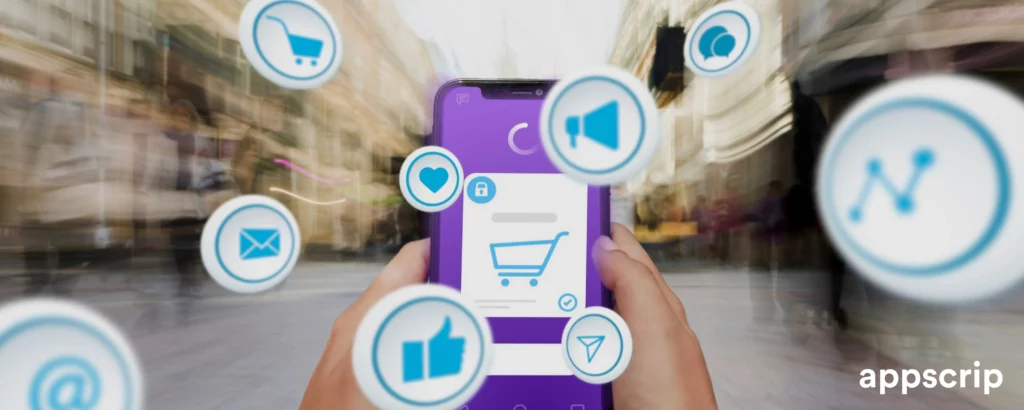Starting an ecommerce business in 2025? The global ecommerce market is expected to hit $8.1 trillion by the end of the year, and competition is fierce. But what sets successful brands apart isn’t just great design or catchy product descriptions, it’s what’s running under the hood.
Think of your tech stack as the engine behind your storefront. It powers what shoppers see and how everything works behind the scenes. A smart setup means faster load times, fewer cart abandons, and better chances of standing out in a crowded market.
Whether you’re launching your first store or upgrading an existing one, this guide will help you choose a stack that fits your goals and scales with your growth.
TL;DR
- A tech stack is the foundation of your ecommerce platform, affecting speed, performance, and scalability.
- Hosted SaaS platforms like Shopify and BigCommerce offer quick setup, while custom-built stacks like MERN and headless commerce provide full control.
- React and Vue.js dominate frontend development; Node.js and Spring Boot are top backend choices.
- MySQL is best for structured data; MongoDB handles flexible, unstructured data. Firebase supports real-time sync for dynamic interactions.
- Stripe and PayPal streamline checkout, while blockchain adds a secure, transparent layer to ecommerce transactions.
- CRM and marketing tools like HubSpot and Mailchimp help you personalize outreach and retain customers.
- Emerging tech like AI, AR/VR, voice commerce, and visual search are shaping the future of ecommerce.
Appscrip offers scalable, pre-built ecommerce solutions designed for performance, flexibility, and fast time-to-market.
Understanding The Best Tech Stack For Ecommerce
What is an eCommerce Tech Stack?
An ecommerce tech stack is the set of tools and technologies you use to build your online store. Think of it like the blueprint and the toolbox rolled into one.
Everything from the frontend visuals your customer interacts with to the backend systems powering inventory and checkout. Whether you’re running on a hosted platform like Shopify or building your own architecture with Node.js and MongoDB, the stack dictates performance, security, and even SEO.
Components of a Tech Stack: Frontend, Backend, and Database
Every tech stack has three core layers:
- Frontend: This is the customer-facing side, what your users see and interact with. It’s built using HTML, CSS, and JavaScript frameworks like React or Vue.js.
- Backend: The engine that drives everything. It handles requests, processes orders, manages inventory, and connects to your database. Common backend technologies include Node.js and Java Spring Boot.
- Database: Your data warehouse. It stores customer info, product details, and transactions. Options include traditional SQL systems like MySQL and newer NoSQL databases like MongoDB.
Choosing the right tools for each layer sets the tone for your ecommerce platform’s speed, reliability, and ability to scale.
Top eCommerce Platforms
When building your ecommerce store, one of the first strategic choices is the type of platform you’ll use. This decision will impact how quickly you can launch, how much flexibility you’ll have, and how scalable your store will be in the long run. Broadly, there are two categories: hosted SaaS platforms and custom-built architectures.
Hosted SaaS Solutions
Hosted SaaS platforms manage hosting, maintenance, updates, and security for you. They’re ideal if you want to launch quickly, focus on marketing and sales, and don’t want to handle complex technical setups.
- Shopify: One of the most popular ecommerce platforms globally, powering over 4.4 million live websites. It offers an extensive app ecosystem, easy payment integrations, responsive themes, and support for omnichannel selling.
- BigCommerce: Built for growing businesses, it comes with more built-in features out of the box compared to Shopify. It’s also highly customizable with open APIs and supports headless commerce options.
Custom-Built Architectures
Custom-built platforms are perfect if you need complete control over your ecommerce experience. These solutions give you the flexibility to build a tailored tech stack that supports specific workflows, features, and integrations.
- Headless Commerce: Decouples the frontend and backend so you can design the frontend using modern frameworks like React, while still connecting to any backend system or CMS. It’s perfect for delivering a consistent omnichannel experience.
- MERN Stack: Combines MongoDB, Express.js, React, and Node.js to build full-stack applications entirely in JavaScript. It allows for fast development, scalability, and custom API creation.
- MEAN Stack: A close relative of MERN, replacing React with Angular. It’s suited for developers looking for a more opinionated and structured approach.
- Jamstack: Stands for JavaScript, APIs, and Markup. It enables high-speed performance with static site generation, serverless functions, and modern deployment workflows. Ideal for content-heavy stores.
If you’re just starting out or want to move quickly, hosted SaaS platforms are a smart choice. But if you have specific requirements, expect rapid growth, or want to craft a completely unique user journey, a custom-built stack offers the freedom and power to build without limits.
Frontend Development Technologies
Your frontend is the face of your ecommerce store. It shapes how fast your site feels, how easy it is to navigate, and whether customers stick around long enough to buy. Choosing the right technologies here is key to building a smooth, engaging experience.
JavaScript Frameworks
Modern ecommerce stores rely heavily on JavaScript frameworks to power dynamic and interactive frontends. Two of the most popular choices today are React and Vue.js.
- React: Developed by Facebook, React is known for its component-based architecture and huge ecosystem. It’s used by ecommerce giants like Amazon and Walmart. It’s ideal for larger projects where scalability, maintainability, and performance are priorities.
- Vue.js: Vue is lightweight and beginner-friendly, making it a strong choice for startups or small to mid-sized ecommerce businesses. It allows rapid development and is easy to integrate with existing systems.
Both frameworks support Server Side Rendering (SSR), which improves page load speed and SEO,the crucial factors in reducing bounce rates and increasing conversions.
Mobile-First Design
With over 73% of ecommerce traffic now coming from mobile devices, designing for mobile first is essential. Mobile-first design starts by focusing on smaller screens and then scaling up for desktops, ensuring your store is functional, fast, and intuitive where it matters most.
Why Mobile-First Matters
- Most customers discover and browse products on mobile.
- Google uses mobile-first indexing, meaning mobile usability affects your search ranking.
- Better mobile performance improves bounce rates, session time, and conversions.
Key Mobile-First Strategies
- Responsive Layouts: Design layouts that automatically adjust across screen sizes using flexible grids, media queries, and fluid images.
- Touch-Friendly Interfaces: Buttons and menus should be easy to tap, with clear spacing to prevent accidental clicks.
- Optimized Load Speeds: Compress images, reduce scripts, and use lazy loading to keep mobile page speeds fast.
- Progressive Web Apps (PWAs): These provide an app-like feel directly from the browser, with offline access and faster load times.
- React Native: For businesses building both web and mobile apps, React Native allows code reuse and seamless user experience across platforms.
When done right, a mobile-first design improves usability, increases engagement, and keeps shoppers moving from browse to checkout without friction.
Backend Development Technologies
Choosing the right backend technology is essential if you want a store that runs fast, scales smoothly, and handles complexity without hiccups. Two of the most trusted backend solutions in ecommerce today are Node.js and Java Spring Boot.
Backend Frameworks
Node.js
Node.js is a JavaScript runtime built on Chrome’s V8 engine. It’s fast, lightweight, and excels at real-time operations. Its non-blocking, event-driven architecture allows it to handle thousands of simultaneous requests without slowing down.
- Great for high-traffic ecommerce sites that need real-time features like live order tracking and instant inventory updates.
- Supports full-stack JavaScript development, meaning your frontend and backend teams can work in the same language.
- Backed by a vast ecosystem of npm packages that accelerate development.
- Works seamlessly with modern frontend frameworks like React, Vue, or Angular.
Java Spring Boot
Java Spring Boot is a mature framework built for complex, enterprise-grade applications. It offers a structured development approach and a massive ecosystem that supports stability, scalability, and security.
- Ideal for large ecommerce platforms with complex business logic and high-volume transactions.
- Built-in features for microservices, dependency injection, and transaction management.
- High reliability and long-term support, which makes it a go-to choice for mission-critical applications.
- Easy integration with other enterprise tools like ERP systems, CRMs, and analytics platforms.
Which One Should You Choose?
- Choose Node.js if you prioritize development speed, real-time features, and a unified JavaScript stack.
- Go with Spring Boot if you need enterprise-level structure, long-term maintainability, and robust support for complex workflows.
Both can scale with your growth, but your choice should reflect your team’s strengths, your platform’s requirements, and how fast you plan to expand.
Importance of API-First Development
Rather than treating APIs as an afterthought, API-first means designing your system with APIs from the ground up. This makes your architecture modular, allowing every piece of your platform from checkout to customer reviews to work independently while staying connected.
Benefits of API-First Development
- Frontend and Backend Independence: Your development teams can work in parallel, speeding up the build and iteration process.
- Seamless Omnichannel Selling: APIs make it easy to connect your backend with mobile apps, third-party marketplaces, voice assistants, and smart devices.
- Easier Integrations: Whether it’s CRM systems like Salesforce, analytics tools like GA4, or payment gateways, APIs simplify connecting external services.
- Scalability: As your business grows, APIs let you expand and evolve your platform without overhauling the whole system.
- Future-Proofing: With APIs at the core, your backend can quickly adapt to emerging technologies and customer touchpoints.
API-first development helps future-proof your business, reduce development time, and deliver a consistent experience wherever your customers choose to engage.
Database Solutions for eCommerce
Your database is where all the ecommerce data from customer profiles to product inventories to every transaction gets stored. The wrong choice can slow you down, compromise security, or limit your scalability.
Choosing Between SQL and NoSQL
When deciding between SQL and NoSQL databases for your ecommerce store, the right choice depends on the type of data you’re handling, how fast you plan to scale, and how flexible your application needs to be.
| Feature | MySQL (SQL) | MongoDB (NoSQL) |
| Data Structure | Structured, relational tables | Flexible, document-based (JSON-like format) |
| Schema | Fixed schema | Dynamic schema |
| Best For | Structured data and complex queries | Unstructured or evolving data |
| Scalability | Vertical (scale-up) | Horizontal (scale-out) |
| Query Language | SQL | MongoDB Query Language (MQL) |
| Use Case Examples | Inventory, financial reporting | Customer profiles, product catalogs with variations |
| Performance | Strong with joins and transactional consistency | High performance with large, distributed datasets |
In short, MySQL is perfect for structured data and analytics-heavy operations, while MongoDB gives you more flexibility and speed when working with complex or fast-changing data models.
Real-time Data Handling with Firebase
As a backend-as-a-service platform developed by Google, Firebase provides a suite of tools that help developers build real-time, scalable applications with minimal setup.
Firebase’s Realtime Database and Cloud Firestore are two options that enable live syncing of data. This means that when one user adds an item to their cart or stock levels change, that update is reflected across all devices instantly, without needing a page refresh.
Key Benefits of Firebase in Ecommerce:
- Real-time Data Sync: Ideal for live order tracking, collaborative shopping carts, and flash sales where timing is critical.
- Built-in Analytics: Google Analytics for Firebase lets you track user behavior, conversion events, and funnel drop-offs in real time.
- Crash Reporting & Performance Monitoring: Helps you quickly identify and fix app issues before they impact sales.
- Scalable Infrastructure: Firebase uses Google Cloud under the hood, so it can scale seamlessly with your traffic spikes.
- Secure Authentication: Integrated tools for email/password login, OAuth, and phone authentication to protect user data.
Payment and Security Technologies
No matter how amazing your products are, if the checkout process is clunky or doesn’t feel secure, people stay away from the platform.
Popular Payment Gateways
Stripe and PayPal are still the top payment options in 2025.
- Stripe: Works in 135+ currencies, handles subscriptions, and comes with built-in fraud protection.
- PayPal: Known and trusted globally, easy to use, and includes buyer protection which gives peace of mind during checkout.
Both also offer one-click payment options, which can seriously boost your conversion rates, especially on mobile.
Enhancing Security with Blockchain
With online fraud and data breaches constantly making headlines, blockchain’s promise of transparent, tamper-proof records is getting real attention. It’s especially useful for businesses that deal with high-ticket items or complex supply chains.
Here’s how ecommerce businesses are starting to use blockchain:
- Secure Identity Verification: Instead of storing sensitive customer data, blockchain can authenticate users without exposing personal info, reducing the risk of data breaches.
- Product Provenance: Customers can track where a product was made, how it was shipped, and every stop along the supply chain. This is huge for premium, ethical, or luxury goods.
- Fraud Prevention: Transactions recorded on blockchain can’t be tampered with, helping merchants verify authenticity and avoid chargeback scams.
Here’s the bottom line: people shop where they feel safe. If your store nails the balance of speed and trust at checkout, you’re already ahead of half the competition.
Integrating CRM and Marketing Tools
Driving traffic to your ecommerce site is just one part of the puzzle. What really moves the needle is how you convert those visitors into paying customers and how you keep them coming back. That’s where CRM (Customer Relationship Management) systems and marketing automation tools come in.
CRM Solutions
CRM platforms help you store and organize customer information, monitor behavior, segment audiences, and build stronger relationships across the buyer journey.
Salesforce
- Designed for enterprise-level complexity and scale.
- Offers deep customization, advanced analytics, and AI-powered lead scoring.
- Ideal for managing large teams, multi-channel sales, and long purchase cycles.
HubSpot
- Popular with startups and mid-sized brands for its simplicity and generous free tier.
- Great for managing email campaigns, tracking leads, and automating customer journeys.
- Easy integration with ecommerce platforms like Shopify, WooCommerce, and Magento.
Marketing Automation Tools
Once your CRM has collected and organized your customer data, marketing automation tools take over to act on that data. These tools make sure your message reaches the right person at the right time.
Mailchimp
- Easy to use and budget-friendly.
- Perfect for automating emails, welcome sequences, and promotional campaigns.
- Offers A/B testing, advanced segmentation, and pre-built templates.
HubSpot Marketing Hub
- Offers deeper workflows and multi-channel automation.
- Tracks customer behavior and triggers actions based on ecommerce trends, specific milestones or activities.
- Integrates well with your CRM data to personalize communication across platforms.
Benefits of Marketing Automation:
- Reduces repetitive tasks so your team can focus on strategy.
- Helps recover lost sales with automated cart abandonment campaigns.
- Provides analytics to constantly improve message timing and content.
Together, CRM and marketing automation turn one-time buyers into loyal customers. They give you the visibility and tools to create better experiences at scale which is what modern ecommerce is all about.
Leveraging Emerging Technologies
Emerging technologies like AI, AR/VR, and even voice commerce are reshaping how people shop online right now.
AI-Driven Personalization in eCommerce
AI helps you show the right product to the right person at the right time. It powers things like personalized recommendations, predictive search, and dynamic pricing. With the right setup, you can create shopping experiences that feel completely tailored to each customer.
- Suggests products based on user behavior and purchase history
- Enables AI-powered chat support for quicker responses
- Forecasts demand and adjusts inventory automatically
The Future of AR/VR in Shopping Experiences
AR and VR are making online shopping feel more interactive. Shoppers can visualize products in their own environment or try them on virtually, which adds confidence to buying decisions.
- Reduces product returns by setting better expectations
- Increases engagement and time spent on site
- Helps customers experience products beyond static photos or videos
Other Emerging Tools to Watch
- Voice Commerce: Voice search and shopping through smart assistants is growing. Optimizing for voice queries and enabling voice-based purchases can be a smart move.
- Visual Search: Shoppers can upload a photo and find similar products instantly. This taps into how people naturally browse on mobile.
- Machine Learning in Logistics: From predictive delivery times to optimized warehouse routing, smart logistics tech is making fulfillment faster and more accurate.
Choosing your ecommerce tech stack is about building a business that runs smoothly, delivers fast experiences, and adapts as you grow. The right stack supports your brand vision, scales with demand, and gives your customers a reason to come back.
If you’re serious about getting it right without all the guesswork, Appscrip is here to help. We’ve built high-performance ecommerce solutions for fast-growing brands, and we can do the same for you.
Why go with Appscrip?
- Pre-built, scalable platforms: Whether you want to launch fast or go fully custom, we’ve got you covered.
- Flexible architectures: From SaaS-based setups to headless commerce, we match your goals.
- Expert development team: We bring years of ecommerce experience, so your tech is in good hands.
- Faster time-to-market: Our solutions are designed to get your store live quickly, without compromising on quality.
- Support that grows with you: As your store evolves, our platform and team adapt with it.
Let’s build something that’s ready for today, and built for tomorrow. Reach out to Appscrip and get your ecommerce journey started with the right stack, right from the start.





